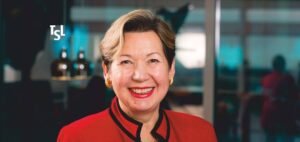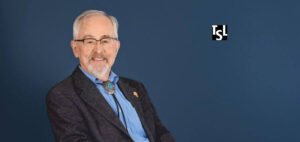Prior to examining the inspiring life of Richard C. Larson, it is worth noting the immense influence that one committed scholar can exert on the development of scholarly disciplines, the reform of public systems, and the international progress of educational technology. Richard’s life is a demonstration of the long-lasting power of inquiry, service, and the tireless search for effective solutions to multifaceted challenges.
Richard Larson’s -“Doctor Queue” for his groundbreaking research in queueing theory-is a paradigm of interdisciplinary scholarship and public influence. At the Massachusetts Institute of Technology (MIT) for over half a century, Richard was a distinguished professor, researcher, innovator, mentor, and thought leader. His distinctive combination of mathematical precision, practical fieldwork, and prophetic leadership has indelibly marked operations research, urban systems, and technology-enabling education. Richard’s legacy is not merely in scholarly work and institutional growth, but in the infinite lives enriched by his dedication to bridging theory with practice.
Early Life and Academic Foundations
Richard Larson’s educational path started out with an interest in mathematics and an enthusiasm for applying scientific reasoning to practical problems. Growing up in a family where education and questioning were highly regarded, his early life was characterized by curiosity and a quest to know the workings of the systems that shape daily existence. He studied at MIT as an undergraduate, impressing everyone soon enough as an outstanding student with a natural ability for analytical thinking. His MIT doctoral work further developed his skills in operations research-a discipline that uses mathematical modeling to optimize real-world, complex systems.
Richard Larson’s initial years at MIT overlapped with an era of intense innovation in applied mathematics and engineering. Under the guidance of the field’s top practitioners, he absorbed the value of balancing academic theory and practical application-a philosophy that would be the foundation of his own career.
Operations Research: Theory Meets Practice
The Essence of Operations Research
Operations research (OR) is a multidisciplinary science that uses mathematical models, statistical analysis, and optimization methods to resolve intricate decision-making issues. For Richard, OR was not merely an intellectual endeavor but an active methodology for dealing with the “messy” problems of the real world. He frequently referred to OR as “research on operations,” highlighting the importance of working directly with actual systems-whether public safety, transportation, healthcare, or education.
Boots-on-the-Ground Approach
Richard Larson’s OR style was characterized by an unshakeable dedication to fieldwork and real-world immersion. He held that solutions could only be effective if they were born out of a thorough knowledge of operational realities, sometimes necessitating researchers to “get their boots muddy.” This was reflected in his practice with public sector institutions, where he used OR concepts to enhance emergency response systems, optimize urban infrastructure, and maximize service delivery.
One of Richard Larson’s most significant contributions was his work to optimize the 911 emergency call system in New York City. Through the application of queueing theory and sophisticated scheduling models, Richard and his colleagues significantly decreased response times and enhanced resource allocation. Although the ultimate effect of these enhancements is incalculable, Richard was convinced their efforts saved lives and established new standards for public safety operations.
Practitioner First, Academic Second
During his long career, Richard Larson insisted that his success as an academic lay in his status as a practitioner. He worked repeatedly with public agencies, non-profit organizations, and industry partners to ensure that his research addressed compelling societal needs. This practitioner-oriented approach extended to his teaching as well, where he pushed students to work directly on real-world problems and to view theory and practice as not separate but together as essential elements of effective problem-solving.
Educational Philosophy and Mentorship
Integrating Theory and Practice
As a professor, Richard Larson’s was best known for combining rigorous theory with hands-on practice. He dismissed a strictly “theorem-proof” style of instruction, holding that students of operations research needed to develop a sense of the workings of actual systems through first-hand experience. His classes at MIT stressed fieldwork, case studies, and group projects challenging students to bring analytical tools to bear on ill-structured, complex problems.
Mentoring the Next Generation
Richard Larson’s impact went far beyond the classroom. Throughout his career, he mentored dozens of doctoral students, many of whom have achieved distinguished careers. His mentoring was marked by a sincere interest in the personal and professional growth of his students, coupled with a dedication to instilling intellectual inquisitiveness and ethical accountability. Richard’s former students frequently remember his lucidity, passion, and willingness to spend time on their development.
Consulting and Real-World Impact
Besides his teaching duties, Richard Larson guided off-campus consulting agencies like Public Systems Evaluations, Inc. and ENFORTH Corp. These agencies offered students a chance to apply themselves to real-world problems over their summer vacations, typically in difficult inner-city settings such as New York City. Learning to address field-based operational issues deepened students’ classroom experiences and encouraged many to enter successful careers in operations research and other related fields.
Richard Larson’s Leadership in Educational Technology
Vision for Technology-Enabled Learning
Richard Larson’s passion for enhancing education went beyond the confines of traditional classrooms. Seeing the power of digital technologies to change lives, he emerged as one of the most prominent champions of technology integration into instruction and learning. His curiosity about educational technology was first sparked by witnessing the positive impact of digital tools on his own children’s learning and seeking ways to take these benefits to larger numbers of people.
Center for Advanced Educational Services (CAES)
Between 1995 and 2003, Richard was the director of MIT’s Center for Advanced Educational Services (CAES). While at the helm of CAES, it created and provided technology-enabled learning solutions to learners globally, overcoming geographical boundaries and increasing access to quality education. CAES’ initiatives set the stage for the future progress in online and blended learning at MIT and elsewhere.
Establishing the Learning International Networks Consortium (LINC)
Richard Larson’s established the Learning International Networks Consortium (LINC) in 2002, an international effort at MIT to harness technology for delivering quality education at scale. LINC assembled higher education institutions, policymakers, and practitioners from more than 25 nations to meet the education demands of underprivileged and geographically isolated communities. The consortium hosted international symposia, supported cross-border partnerships, and advocated the application of e-learning, distance learning, and information and communication technologies (ICTs) for achieving equal access to education.
MIT BLOSSOMS: Blended Learning for Global Classrooms
Richard Larson’s most enduring legacy in education technology may be the MIT BLOSSOMS (Blended Learning Open Source Science Or Math Studies) initiative. Following a trip to a Chinese rural school, Richard pictured interactive video-based lessons that could engage students and empower teachers as opposed to transferring information. BLOSSOMS develops free, interactive mathematics and science modules with instructors from across the globe, which can be used to complement local classroom instruction. The blended strategy has ensured equal access to quality STEM education to students in different contexts, especially in underserved areas. BLOSSOMS is a global model for open educational resources and blended learning.
Scholarship and Thought Leadership
Trailblazing Research in Queueing Theory and Urban Systems
Richard Larson’s intellectual contributions are both wide and profound, including seminal research in queueing theory, urban operations, and systems engineering. His work has influenced the design and operation of large service systems, ranging from emergency response networks to transportation systems. Richard’s writing is characterized by its clarity, practicality, and interdisciplinary breadth, making it accessible to both scholarly and practitioner readers.
Model Thinking for Everyday Life
In his latest publication, Richard has targeted the cultivation of “model thinking” among non-experts. His interactive book, MODEL THINKING For Everyday Life: How to Make Smarter Decisions, brought out by INFORMS, familiarizes readers with the twin senses of “model”-as being both exemplary and abstract. Richard champions the employment of mathematical and abstract models for bolstering decision-making in day-to-day life by stressing the necessity of process rather than formulaic answers. He invites readers to keep pace, forgo technological crutches, and grapple with issues in a profound way employing basic tools of analysis.
Advocacy for Human Intelligence
Although cognizant of the impressive potential of artificial intelligence (AI), Richard Larson is a dedicated supporter of human intelligence (HI). He warns against excessive dependency on technology and encourages teachers and learners to value critical thinking, flexibility, and experiential learning. In Richard’s view, the learning process-characterized by questioning, examination, and revision-is greater than the acquisition of solutions.
Influence on Public Policy and Organizational Practice
Enhancing Public Sector Operations
Richard Larson’s work has profoundly affected the operation of public sector organizations. His consulting projects with organizations like the U.S. Postal Service and the City of New York have brought academic theory into real-world improvements in service delivery, resource management, and operational effectiveness. Richard’s skill at presenting complicated ideas to a variety of stakeholders has made him a highly valued advisor and partner.
Shaping Professional Societies
In addition to his own work, Richard Larson has contributed significantly to the development of the field of operations research through his professional society leadership. He has been president of the Institute for Operations Research and the Management Sciences (INFORMS) and has received many awards for his scholarship and service. Richard’s leadership has developed into a vibrant, collaborative community of scholars and practitioners committed to developing the field and tackling issues of global concern.
Personal Life and Values
Dedication to Family and Service
Richard Larson’s career successes are balanced with a strong sense of dedication to family and service. He and Mary Elizabeth Murray (“Liz”) were wed in 1979, and they have, together, made the juggling of career and family life manageable. Richard has been characterized as accessible, with a willingness to give of his time, by his peers and students. His dedication to changing the world in a positive manner is also prominent.
Values of Persistence and Curiosity
Throughout his lifetime, Richard has exemplified the virtues of tenacity, inquisitiveness, and humility. He comes to every new challenge with an open mind and a willingness to learn, challenging those around him to do the same. His legacy is not only characterized by his achievements but also by the virtues he has imparted to his students, peers, and collaborators.
Legacy and Lasting Influence
Expanding the Frontiers of Knowledge
Richard Larson’s work in operations research, urban systems, and educational technology has pushed the boundaries of knowledge and practice. His research has helped resolve some of the most significant challenges confronting contemporary society, ranging from emergency response to fair access to education. Richard’s interdisciplinary method and dedication to bridging theory and practice are an inspiration to future generations of scholars and practitioners.
Inspiring the Next Generation
Richard Larson’s impact lasts through the millions of students, colleagues, and organizations that he has mentored and influenced. His demands that theory and practice are inseparable, his defense of human-scale learning, and his vision of technology-enhanced education shape the development of academic fields and public systems around the globe.
As education technology and operations research keep improving, Richard’s legacy continues to be a beacon. His life shows that the greatest breakthroughs are made where science, service, and imagination meet. Richard’s life is an inspiration to everyone who wishes to leave a lasting legacy through knowledge, creativity, and a firm commitment to the greater good.
Conclusion
Richard Larson’s MIT career and beyond best illustrate the force of interdisciplinary scholarship, applied activity, and creative leadership to bring about change. As an innovator in operations research, as a technology-supported education champion, and as a mentor to dozens of students across multiple generations, Richard has created an enduring imprint on academia, public policy, and international education.
His legacy is one of service, innovation, and an unshakeable faith in the power of human intelligence to tackle the world’s most intractable problems. In a time of rapid technological advancement and international challenges, Richard’s life and work serve as a reminder that the greatest indicator of success is not honors or technological innovation, but the enduring impact we have on others’ lives and on the systems of our world.
Read This Edition : 10 Distinguished Education Leaders Whose Legacy Continues to Inspire, 2025


